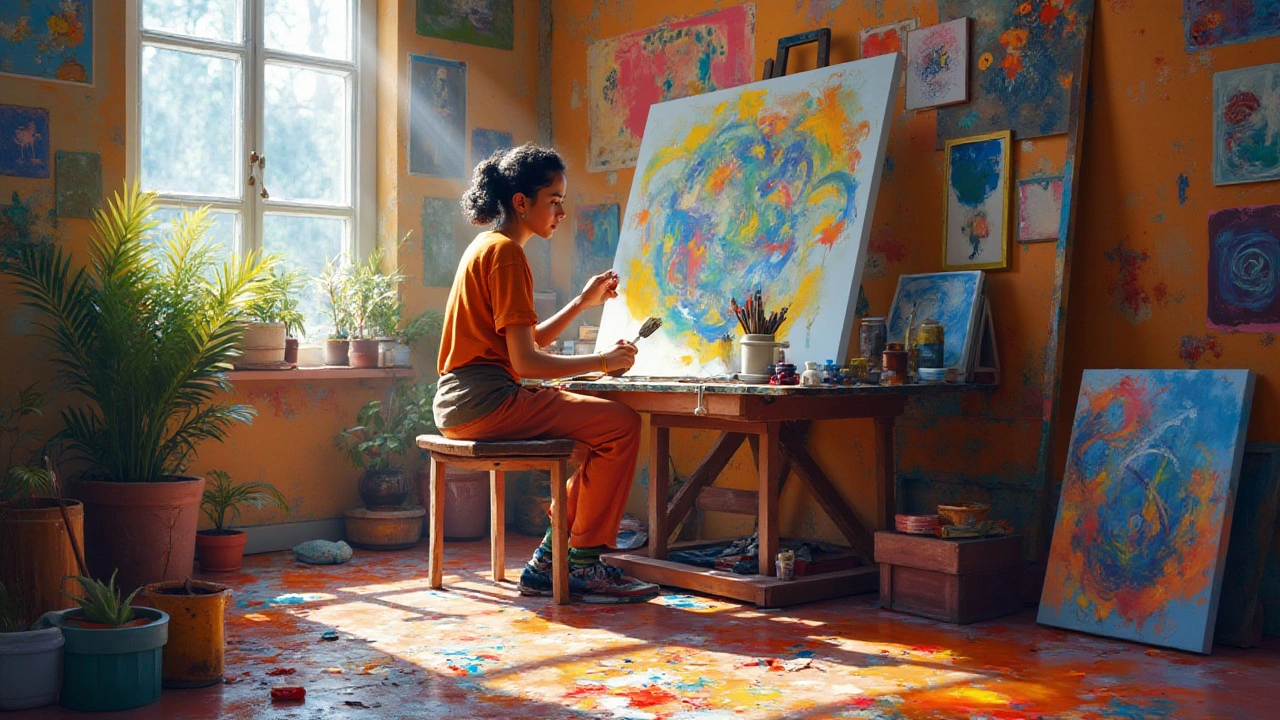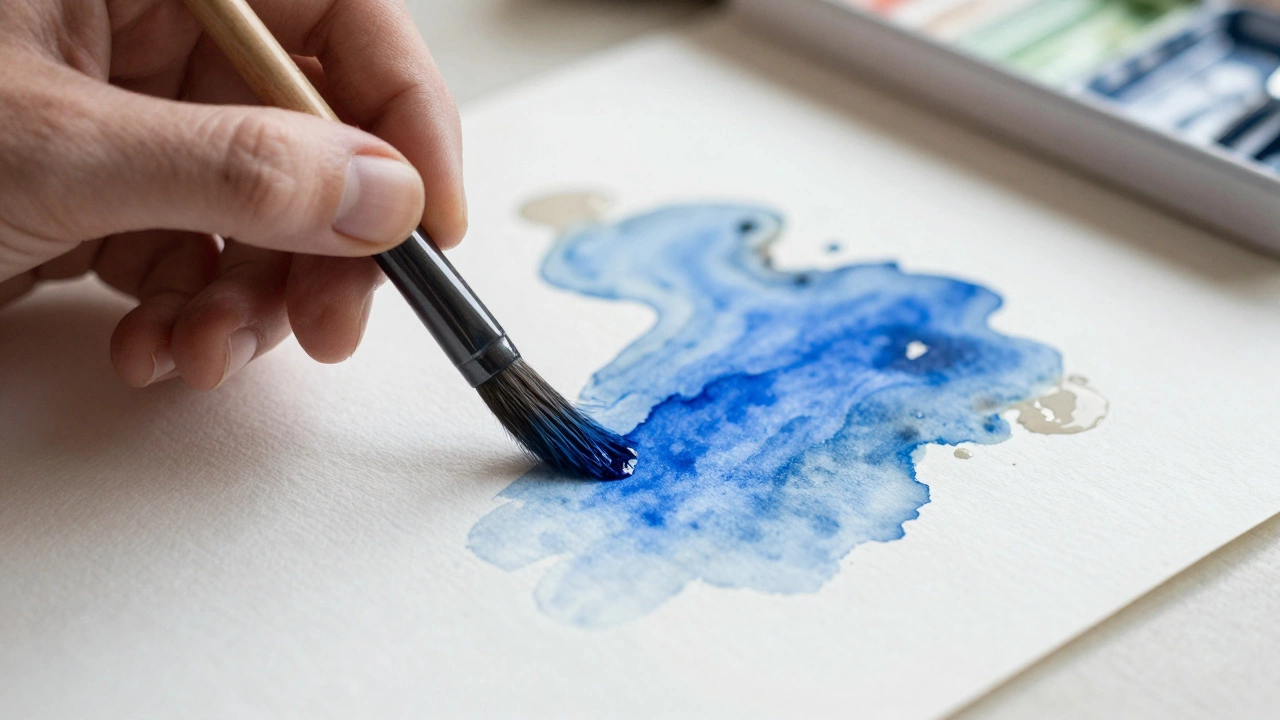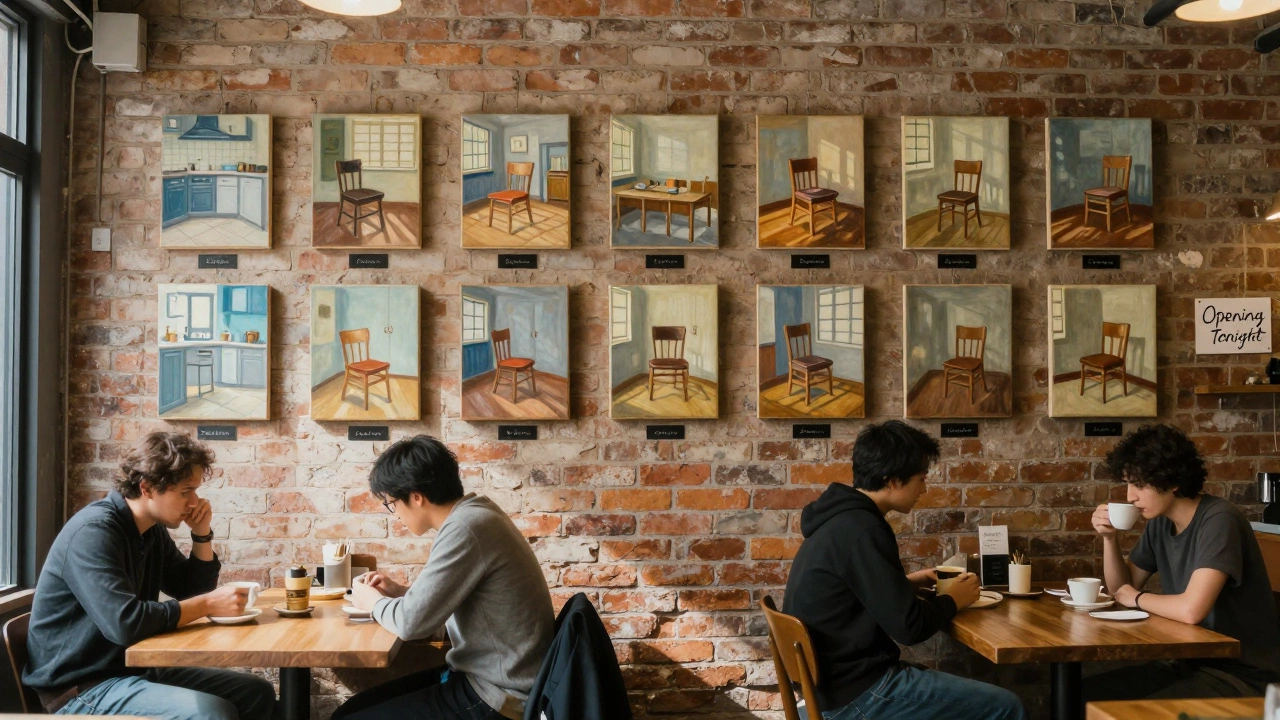Abstract art is a kaleidoscope through which colors, shapes, and forms break away from their earthly bounds to dance freely. This form of art, untethered by representational demands, invites the onlooker to see beyond the surface. The most remarkable artists in this genre have managed to evoke powerful emotions and lay bare the nature of creativity itself. Their ability to engage viewers beyond the superficial is perhaps what sets these artists apart, marking them as timeless figures in art history.
Exploring abstract art means delving into a world where every artist offers a unique window into their personal universe. Over the years, the world has seen numerous artists who have dared to redefine how we perceive art. By venturing into the realm of the abstract, they invite audacious dialogue around the meaning and interpretation of visual expression. The legacy of these iconic figures continues to resonate, influencing contemporary art and setting the stage for future generations.
- The Origins of Abstract Art
- Pioneers of Abstract Expressionism
- The Impact of Abstract Art
- Recognizing Modern Masters
The Origins of Abstract Art
To understand the abstract art movement, it is essential to take a stroll through the early 20th century, a time when traditional art conventions began unravelling at the seams. During this era, revolutionary changes in technology and philosophy were altering perceptions across societies. Artistic circles began to feel a shift, as artists sought to break free from realism, exploring new planes of expression that went beyond mere imitation of the world around them. This renegade spirit manifested in visionary works that eschewed identifiable form and representation. Artists such as Wassily Kandinsky, who is often hailed as one of the forerunners of the movement, ventured into new territories of artistic expression, using color and form to convey emotion and spirituality.
Kandinsky, in particular, believed that art could transcend the material and connect people on an emotional level. His works were characterized by a shock of colors and dynamic compositions that aimed to establish a 'visual symphony'. In his influential text, 'Concerning the Spiritual in Art', Kandinsky articulated his vision of abstract art and its power to evoke deep emotions. Another early pioneer, Piet Mondrian, developed his distinct style by reducing elements to their essentials. Mondrian sought to capture a harmonious essence, using lines and color squares to articulate the balance he perceived in nature. These figures paved the way for a growing number of artists who would carry the torch of abstraction through the tumultuous years of both World Wars.
As they experimented with different forms and ideas, artists like Kazimir Malevich, with his creation of Suprematism, expanded the boundaries of abstract art. Malevich's iconic 'Black Square', a minimalist black box painted on a white background, represented a radical departure from the art that had dominated the canvas for centuries. Such innovations laid the groundwork for what many describe as a revolution in art, as abstraction took hold and began to flourish in capitals around the world. This transformation was not instantaneous but rather evolved over years, fed by the cross-pollination of ideas that happened in the melting pots of cities such as Paris and New York.
The movement was also a reflection of the changing world, where artists felt the need to depict the new, unprecedented realities brought on by a rapidly modernizing world. The traditional techniques and forms that had dominated art no longer sufficed to express the energy and dislocation of the age. Thus, abstract art emerged, not only as a new aesthetic but as a language of visual metaphor, hailing a break from the past and a step towards artistic freedom. As more artists immersed themselves in this newfound language, abstract art continued to evolve, inspiring waves of experimentation that would leave an indelible mark on modern art.
'The artist must train not only his eye but also his soul.' - Wassily Kandinsky
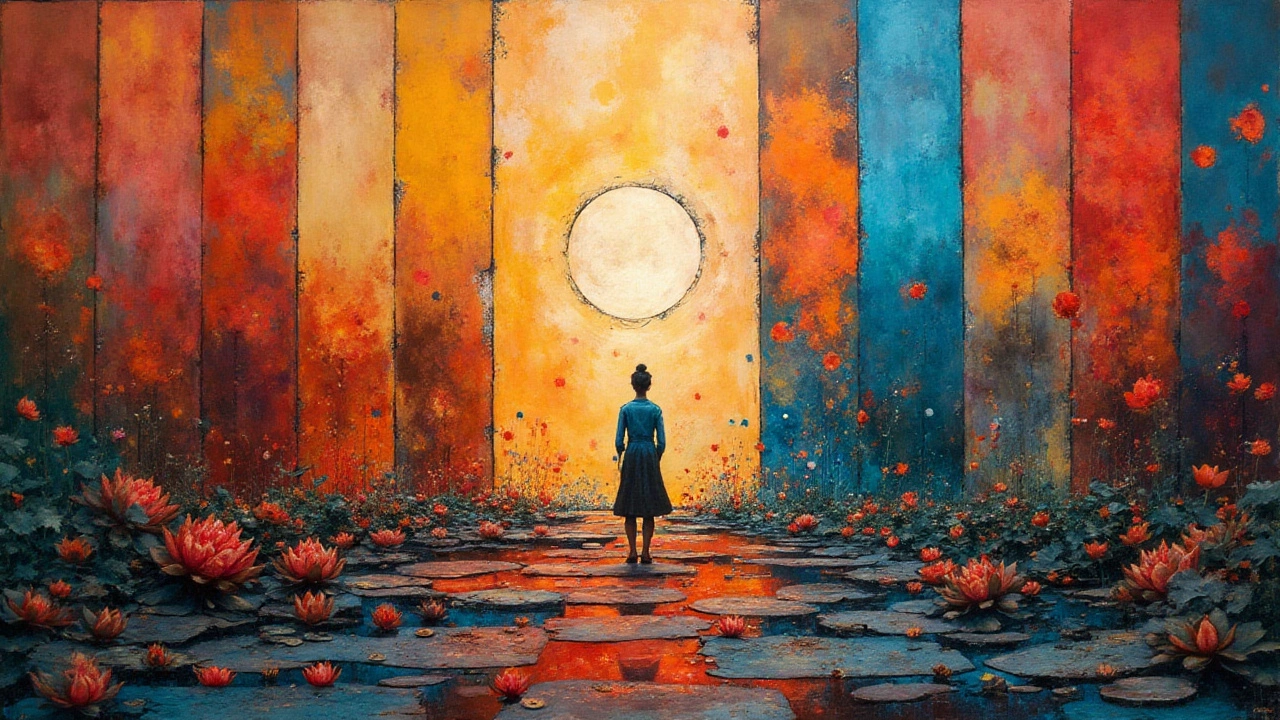
Pioneers of Abstract Expressionism
In the mid-20th century, a bold new movement emerged on the art scene known as Abstract Expressionism. This movement broke new ground, as the pioneers of this style shifted the art world's focus from European dominance to a uniquely American perspective. These artists, often converging on New York City, sought to convey emotions through dynamic abstract art in forms previously unseen. The iconic 'drip' painting technique of Jackson Pollock, for example, became synonymous with Abstract Expressionism and is characterized by its unpredictable yet controlled chaos that captures viewers’ imaginations. Pollock's method of pouring and splattering paint infused his works with an unprecedented energy and vigor, redefining the canvas as an arena within which to act.
Alongside Pollock, figures like Willem de Kooning and Mark Rothko also played pivotal roles in this movement. De Kooning’s swirling, tumultuous patterns are as much an assertion of raw emotion as they are art history in the making. Rothko, known for his vibrant color fields, pushed the boundaries of how color could evoke feeling, creating a meditative experience that asked viewers to look beyond the physical into the emotional. His large, floating rectangles of color were intended to elicit profound emotional responses, an intention that Rothko had often described in his own reflections on art. Each piece by Rothko is a testimony to his belief that artists are capable of transforming the human psyche through the power of color and form.
"The modern artist is working with space and time and expressing his feelings rather than illustrating," argued Mark Rothko, capturing the ethos that defined the expressionist movement. Under this revolutionary banner, the works produced during this era were as much a statement of artistic independence as they were explorations of the subconscious. This furious wave of creativity was often less about representation and more about communicating intense personal and philosophical ideas. Artists used scale, color, and non-traditional techniques to express deeply personal themes. Their experiments with these elements allowed them to translate complex internal landscapes into visual form.
Moving beyond personal canvases, this movement had a wider cultural impact, symbolizing freedom and innovation in post-war America. It influenced countless fields, from music to literature, echoing a generation’s desire to break free from conventional constraints. As a movement, Abstract Expressionism was recognized not just for its innovation but for its immense scale and energy, effectively placing New York as an art world epicenter. Beneath its energetic surfaces lay profound reflections on life and introspective challenges to the observer's understanding of beauty and art.
This movement, now deemed one of the most significant of the 20th century, remains a compelling area of study for art lovers, offering endless exploration into how spontaneous, unrestrained creativity can narrate the story of an era. The legacy of these pioneering abstract artists continues to inspire and provoke discussions about the nature of art and its capacity to shape and reflect the complexities of human emotions.
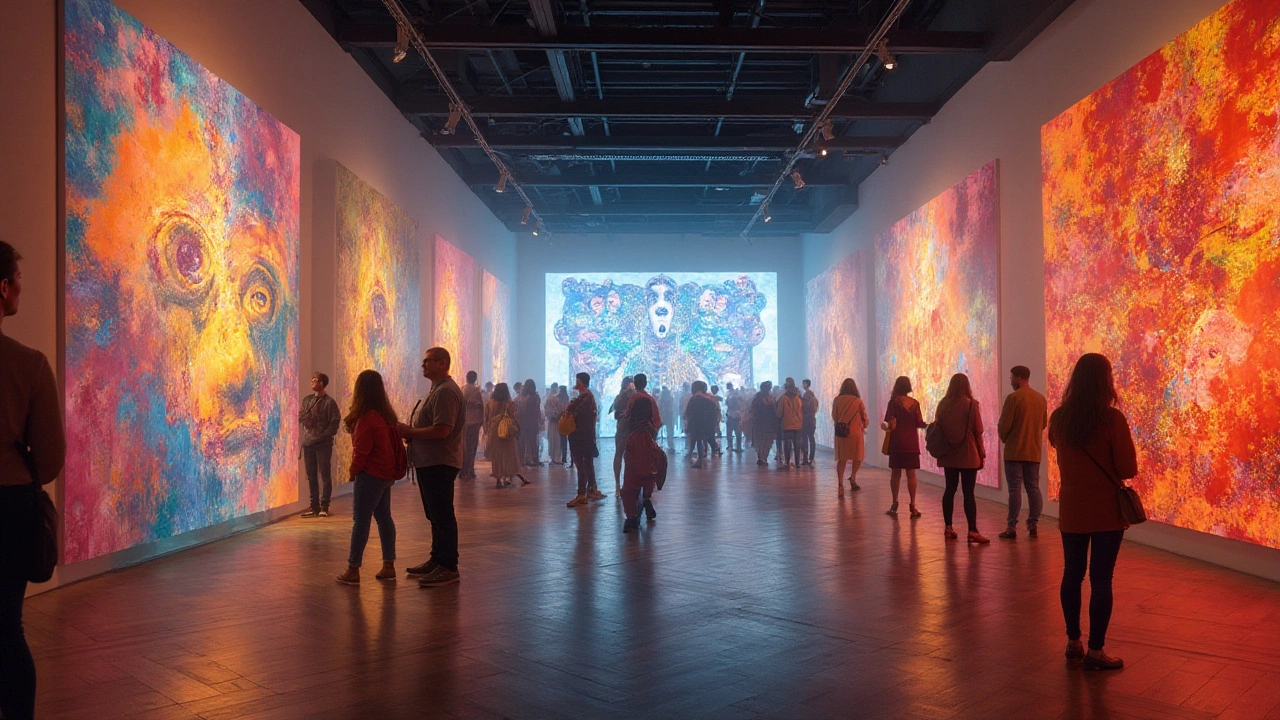
The Impact of Abstract Art
When abstract art found its footing in the early 20th century, it subverted many long-standing artistic norms and paradigms. This art form gave artists an avenue to eschew realism and embrace abstraction, allowing for colors and forms to convey emotion and meaning in daring new ways. This movement reshaped what art could express and altered the global cultural landscape. Many believe the tumultuous events of the modern world, from world wars to rapid industrialization, spurred artists to seek new ways of expression, freed from the constraints of traditional representation. The renowned abstract artist Wassily Kandinsky suggested that colors and shapes could reflect the inner state of humankind, steering societal introspection.
Abstract art encouraged viewers to engage deeply with a piece, moving beyond passive consumption to active interpretation. Unlike realism, where the subject is clear, abstraction demands the observer to ponder and interpret, becoming part of an intimate conversation with the artwork. This has inspired countless dialogues about perception and subjectivity in the art world. The expansive influence of abstract creators like Piet Mondrian or Jackson Pollock, whose splats and spots appear chaotic yet are meticulously deliberate, resonates well beyond gallery walls. They encouraged people to consider art not as a mirror of reality but a manifestation of thoughts, emotions, and philosophies.
The resonance of abstract art is not confined to art galleries and museums. Its impact permeates various spheres, from architecture to design, influencing minimalism and innovation across different industries. The grid-based compositions of Mondrian, for instance, have found expression in everything from urban planning to fashion design, embodying a neatness and rhythm that evokes harmony and balance. The way these influential figures dared to express intangible ideas or spontaneous energies continues to inspire contemporary artists today.
The financial implications of abstract art cannot be overlooked, adding another dimension to its impact. During auctions, abstract pieces often fetch astronomical prices, reflecting not only the value of creativity but the deep-seated appreciation for abstract art throughout history. For instance, a painting by the famous artist Wassily Kandinsky was once sold for over $20 million, emphasizing how these works remain sought-after treasures. Whether critiqued or celebrated, abstract art's rebellious spirit and its capacity to inspire free thinking and challenge perceptions cannot be overstated.
“Abstract art enables the artist to perceive beyond the tangible, to extract the infinite out of the finite. It is the emancipation of the mind. It is an explosion for the present-day artists. It is of every time, of every age.” – Arshile Gorky
Ultimately, abstract art has altered the way we interpret art and the world. Its legacy lies in the universality of its appeal, offering a blank canvas onto which viewers can project their thoughts and emotions. Abstraction opens infinite possibilities for aesthetic and philosophical exploration, ensuring its relevance in cultural conversations for decades to come. This transformative power reveals why abstract artists are regarded not only as creators but as pivotal figures who impacted the world in profound, lasting ways.
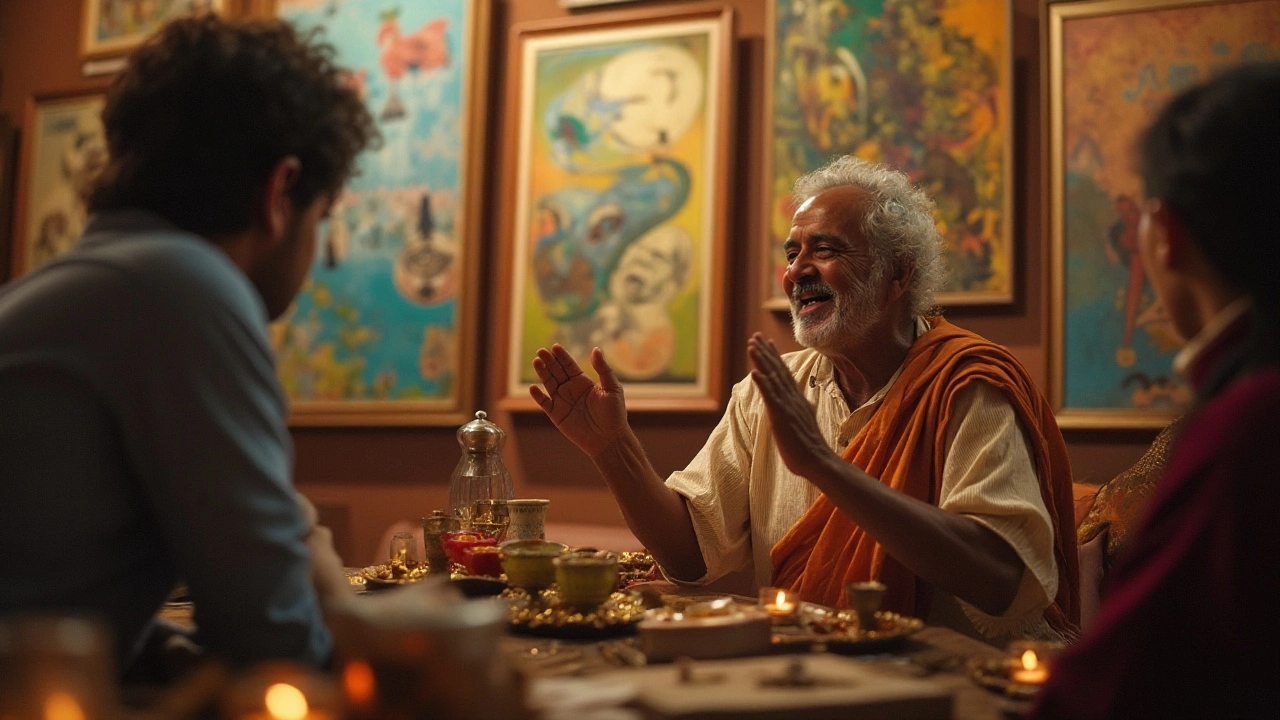
Recognizing Modern Masters
When we explore the contemporary landscape of abstract art, it becomes evident how diverse and profound the contributions of modern masters are. The trailblazers of today have transcended traditional mediums, weaving technology and unconventional materials into their practice. These artists, unlike their predecessors, have the advantage of instant global connectivity, allowing them to draw inspiration from countless sources and cultures. One might consider the dynamic works of artists like Gerhard Richter, whose exploration of the abstract bridges the gap between photography and painting. His oeuvre, known for its textured complexity, often leaves viewers engulfed in a spectrum of emotion—from serene contemplation to intense reflection. This capacity to evoke a vast emotional range is what arguably cements him as one of today's most influential abstract artist.
Yayoi Kusama, another formidable name in modern art circles, has redefined how we perceive spaces with her immersive installations. Her famous Infinity Mirror Rooms are testament to her ability to encapsulate the notion of boundlessness, offering visitors a peek into her polka-dot filled realities. These installations are immersive experiences rather than mere exhibitions, making anyone who steps inside a participant in the art itself. As Kusama herself once stated:
“My art originates from hallucinations only I can see.”Her profound words highlight the deeply personal nature of abstract art and how it serves as a conduit for sharing intensely personal visions with the world.
The influence of modern abstract masters extends beyond the walls of galleries. They offer commentary on societal issues and challenge the status quo with their innovative methods and bold themes. In embracing abstract art's unpredictability, these artists lead us into uncharted territories, provoking thought and inviting dialogue. They wield their creativity with an almost rebellious streak—unafraid to question, to deconstruct, and to challenge. Their art is often seen as both a mirror to our times and an escape from it, reflecting a world that is as chaotic and vibrant as the paintings themselves.
Equally worth noting are abstract artists embracing digital evolution. Names like Refik Anadol are pushing the envelope by utilizing artificial intelligence to create mesmerizing data-driven art installations. Incorporating real-time data, his projects transform the way audiences interact with art, offering a multi-sensory experience that is as innovative as it is beautiful. This marriage of technology and creativity underscores the adaptability of the abstract movement, proving it to be as relevant today as it was a century ago.
These modern masters steadily navigate the realms of abstract art with a fearless approach, drawing on every resource available, from politics to technology. They inspire us to look past the obvious and question our perceptions while embracing chaos as a pathway to beauty. It leads one to reflect deeply on the boundless possibilities of the human imagination, reinforcing the notion that the heart of abstract art lies in its power to transform, provoke, and inspire.
